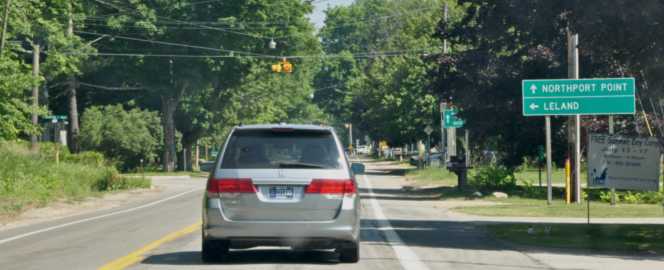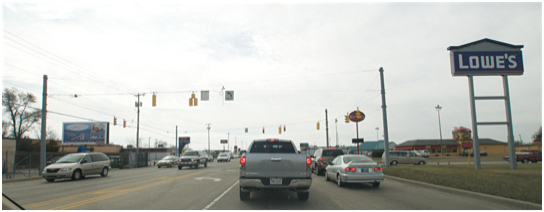Traffic Signals
Traffic signals are a common problem for all visually impaired drivers. The yellow traffic light is often the “easiest” for most bioptic drivers. It tends to stand out and many drivers catch the flash when it changes.

The red traffic light depends on many factors. Visual impairment from conditions such as Cone Dystrophies or Achromatopsia can severely impair color vision. For these patients colors detected methods such as subtract filters as used in digital cameras may be needed to determine traffic signal color.
Glare, especially that aggravated by low-lying sunlight can wash out the color of the traffic light. The color of the casing around the traffic light can make a difference. Many bioptic drivers prefer the newer lights with the black casing vs. the yellow casing. When black backgrounds are placed behind the traffic light, the color is easier to see in bright sunlight. Proper sunwear can assist the patient. It is not uncommon that the sunwear filters may be modified after the patient starts the driver training process and further glare or signage issues arise.
The picture below shows how the bright sky washes out the red traffic light. Notice that the red brake light can be seen because it exits on the darker background of the truck.

Strategy for Approaching Traffic Lights
Many low vision clients have difficulty distinguishing the color of the traffic lights; therefore they tend to apply their brakes, as they get closer to the intersection. However, this is dangerous and it not a safe strategy. The drivers in the cars driving behind the bioptic driver may see a green light and are not excepting the car in front of them to be hitting the brakes. This could result in a result rear end collision. We teach a safe strategy: coast, Scope and look for Clues
Coast - Scope - Clues
COAST: Coasting give the bioptic driver more time to spot the color of the traffic light. It gives them the ability to get in your bioptic, come out look for clues and get back in the bioptic telescopes more than one time. It also keeps the bioptic driver safe; by coasting you are still moving and will avoid a rear-end collision.
SCOPE: The bioptic scope can be used in advance to judge the color of the light and to detect when a traffic signal change occurs.
CLUES: After your first dip into your bioptic telescope you need to come out and search for clues. Is the vehicle in front you stopped or have red brake lights? Is cross traffic moving through the intersection or are the vehicles stopped?
A bioptic driver needs to be a master of multi-tasking and always needs to be focused on the driving task.
